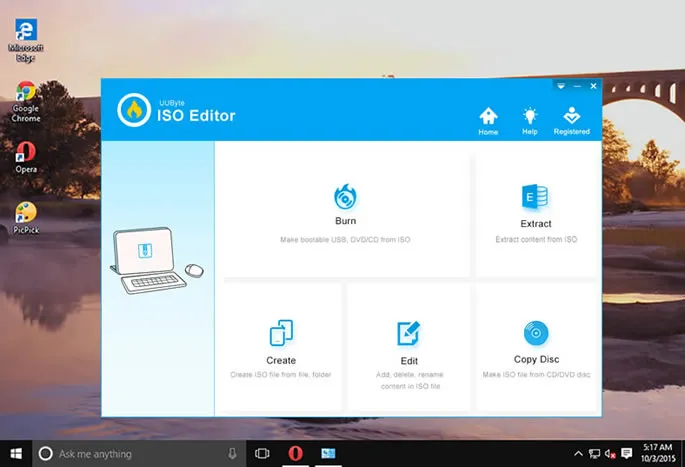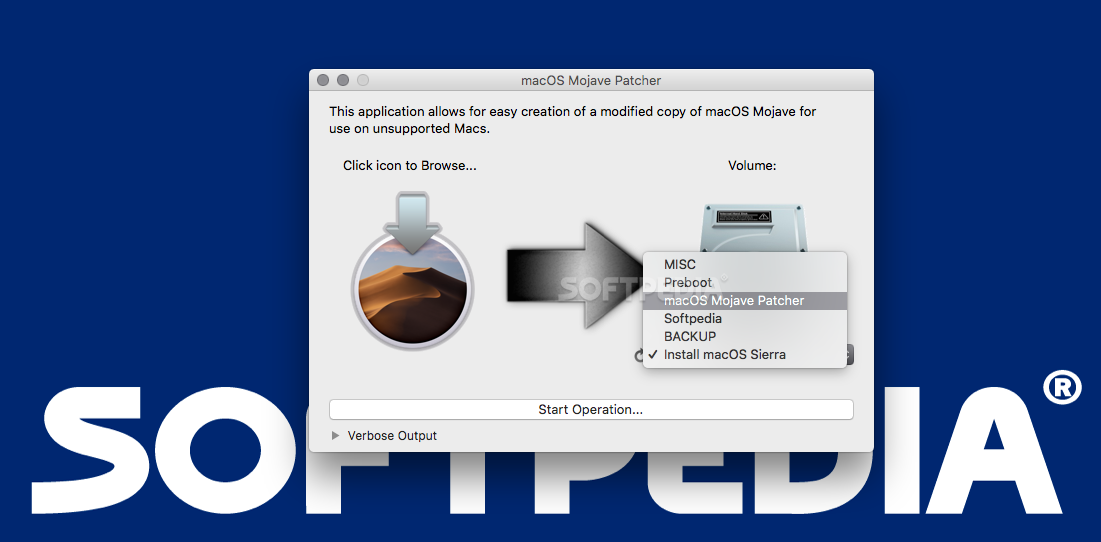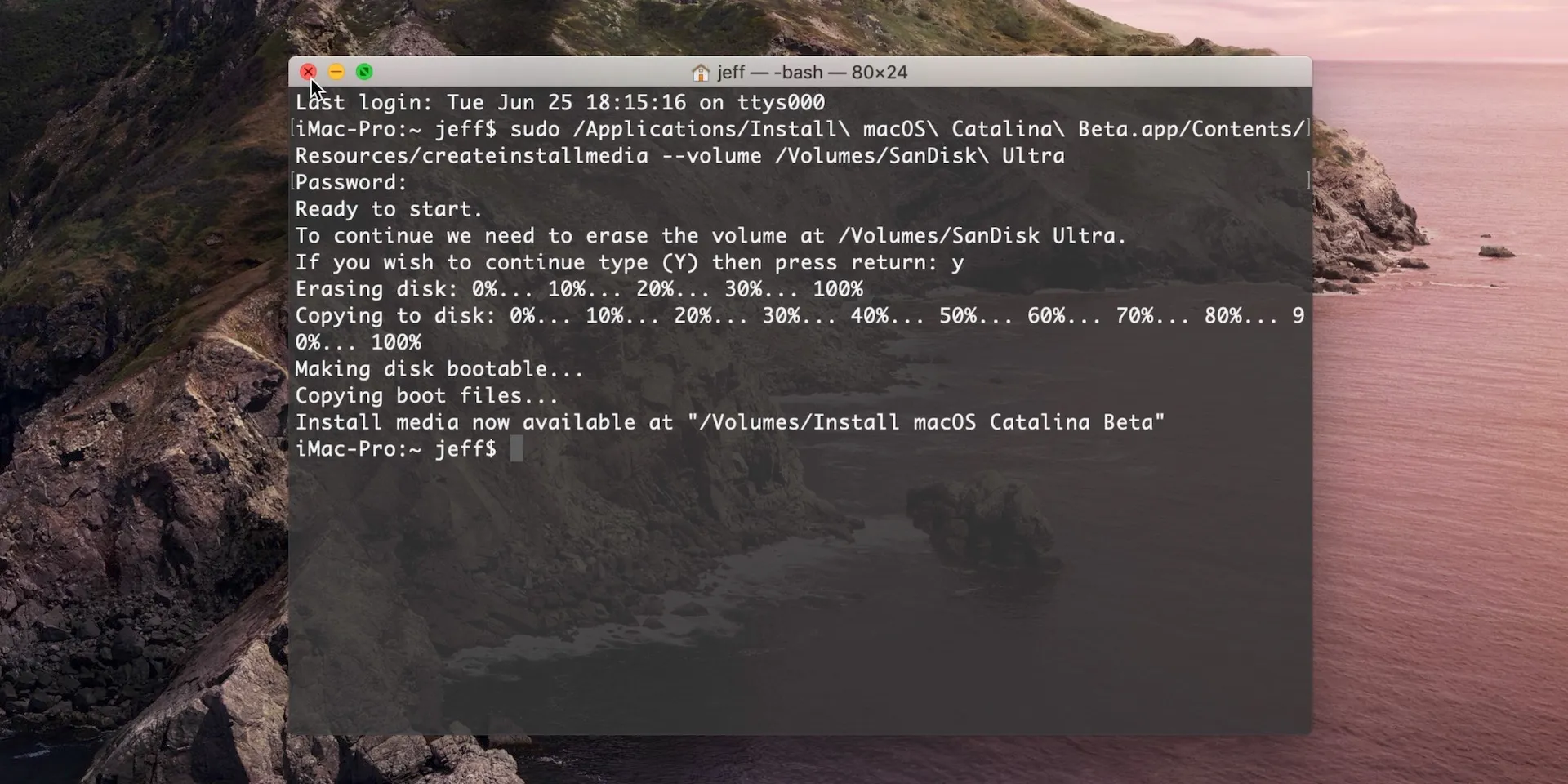Create Bootable Usb On Mac From Iso; Create Bootable Usb On Mac Disk Utility; Create Bootable Usb On Mac For Windows; Create Bootable Usb On Macos Catalina; If you want to use your USB stick with an Apple Mac, you will need to restart or power-on the Mac with the USB stick inserted while the Option/alt (⌥) key is pressed. Type 'Y' and press enter. Leave the Mac alone as it formats and copies over the installer. Once Terminal says 'Install media now available,' it is safe to right-click the removable drive on the. Create macOS Catalina Bootable USB on Windows: Required Files macOS Catalina DMG file for a clean installation. (Download links have been provided below) A good internet connection to download the macOS Catalina DMG file.
macOS Catalina is a hugely exciting upgrade for the Mac. In some ways, it’s like having a completely new computer. You may have already taken the plunge and installed it, or maybe you’re waiting to see how it settles down before you install it. But whichever camp you’re in, it’s a good idea to create a bootable installer for macOS Catalina. That way, if anything goes badly wrong with your Mac, you’ll be able to boot from the installer and get going again quickly.
Why do I need a bootable installer for macOS Catalina?
There are a number of reasons for creating a bootable USB Mac installer.
- If you have more than one Mac, it allows you to install Catalina on all your other Macs without having to download it from the App Store each time.
- You may want to clean install Catalina, in which case you’ll completely wipe your startup disk and will need to boot from an external drive to do that.
- It’s good protection against a catastrophe striking your Mac’s startup disk, especially if you don’t have a stable internet connection. Normally, if you need to reinstall macOS, you can just boot from the recovery partition and do it from there. However, that means re-downloading the installer. So, if you don’t have an internet connection or it’s very slow, you need an alternative.
What should I use as a bootable installer?
How To Create Bootable Usb Mac Os Catalina
You can use an external hard drive, an SSD or a USB stick. Anything that has at least 16 GB of free space. You’ll need to create a new partition (or container if it’s formatted as AFPS) for the installer so if you have data on it you need, you should copy it to another drive first.
How to create a bootable USB drive for macOS Catalina
Whoa! Not so fast. There’s one more thing you should do before you create the installer: clear out the junk on your Mac. Before you undertake any major task on your Mac, and especially before you install a new version of the operating system, you should clear out junk and old files you no longer need. I don’t normally recommend software tools, but in this case, the nest way to clear out the clutter is to use CleanMyMac X. It can scan your Mac at the press of a button, identify all the files you don’t need, and allow you to get rid of them with one more click. Here’s how to use it:
- Install, and launch CleanMyMac X — download a free edition here
- Choose Smart Scan from the list of utilities in the sidebar.
- Press Scan.
- When it’s finished, press Run to delete files immediately, or Review Details to see what it has found.
Once you’ve cleared out the clutter, you can go ahead and create your bootable installer. Here’s how:
- Launch the App Store app and search for macOS Catalina. (If you’re reading this before Catalina has been launched, you’ll need to use the public beta. You can sign up for Apple’s public beta program and download it here Apple Beta Software Program)
- When the results appear, click on Catalina, then click ‘Get’.
- Wait for it to download. When it’s finished, the installer will launch. Quit it immediately.
The installer has now been saved in your Applications folder. You can go ahead and check, if you like. You now have two options for creating the installer. If you’re comfortable with using Terminal, you can go ahead and jump to the instructions for that, below. If you’d rather not use Terminal, there’s a neat utility called Diskmaker X that will do it for you. All you need to do is download and install it and then, when you run it, point it to the macOS Catalina installer you just downloaded. There are full instructions on the download page.

How to create a bootable installer using Terminal
- Plug the USB stick, hard drive or SSD into your Mac.
- Go to Applications>Utilities and double-click Disk Utility to launch it.
- Select the disk you want to use for the installer and choose the Erase tab.
- Choose APFS or Mac OS Extended (Journaled) as the format and choose GUID partition map from the options, if it’s available.
- Give the disk a name and press Erase.
- When it’s finished, quit Disk Utility.
- Go to Applications>Utilities and double-click Terminal to launch it.
- Type:
sudo /Applications/Install macOS Mojave.app/Contents/Resources/createinstallmedia —volume /Volumes/Untitledwhere ‘Untitled’ is the name of your USB stick or external hard drive
- Press Return and wait for the word Done to appear in Terminal.
- Quit Terminal


You now have a macOS Catalina installer on an external disk or USB stick. Eject it, unplug it and keep it safe. You can use it to install Catalina on any Mac that supports it.
One more step: update applications
Once you’ve used tour new installer to install Catalina on a Mac, it’s a good idea to update all your applications so that that are Catalina compatible. You can do this manually, from the App Store and by launching non-App Store apps and choosing check for updates, but that’s a long and tedious process. It’s much quicker and easier to use the updates in CleanMyMac X. Here’s how you do it.
- Launch CleanMyMac X.
- Select the Updater tool in the Applications section.
- Press Select All.
- Press Update.
And that’s it. You’re done. CleanMyMac X checks all your installed apps for updates and then updates them all.
Creating a bootable installer for macOS Catalina isn’t difficult. If you have a spare disk or USB stick and are comfortable using Terminal, you can do it right away. If you’d rather not use Terminal, use the Diskmaker X tool described above. Whichever method you use, make sure you use CleanMyMac X to clear out the junk on your Mac before you start, and use it again to update your applications when you’ve finished.
Apple hasn’t shipped operating systems on physical media in a full decade, but there are still good reasons to want a reliable old USB stick for macOS Catalina. Luckily, it's not hard to make one—either with a handy graphical user interface or some light Terminal use. Here's what you need to get started:
- A Mac that you have administrator access to. We've created a USB stick from both Mojave and Catalina, but your experience with other versions may vary.
- A 16GB or larger USB flash drive or a 16GB or larger partition on some other kind of external drive. A USB 3.0 drive will make things significantly faster, but an older USB 2.0 drive will work in a pinch; 8GB drives worked for Mojave and older versions of macOS, but the Catalina installer is just a little too large to fit.
- The macOS 10.15 Catalina installer from the Mac App Store (in High Sierra or older macOS versions) or the Software Update preference pane in Mojave. The installer will delete itself when you install the operating system, but it can be re-downloaded if necessary.
- If you want a GUI, take a look at Ben Slaney's Install Disk Creator from MacDaddy. There are other apps out there that do this, but this one is quick and simple.
If you want to use this USB installer with newer Macs as they are released, you'll want to periodically re-download new Catalina installers and make new install drives. Apple rolls support for newer hardware into new macOS point releases as they come out, so this will help keep your install drive as universal and versatile as possible.
AdvertisementThere's also one new consideration for newer Macs with Apple's T2 controller chip—as of this writing, that list includes the iMac Pro, the 2018 Mac Mini, the 2018 MacBook Air, and 2018 and 2019 MacBook Pros, though Apple keeps an updated list here. Among this chip's many security features is one that disallows booting from external drives by default. To re-enable this feature, hold down Command-R while your Mac reboots to go into Recovery Mode and use the Startup Security Utility to 'allow booting from external media.' If you're trying to install an older version of macOS, you may also need to go from Full Security to Medium Security to enable booting, but if you're just trying to install the current version of macOS, the Full Security option should be just fine. And if you're just doing an upgrade install rather than a clean install, you can run the Catalina installer from the USB drive from within your current installation of macOS, no advanced tweaking required.
The easy way
Once you've obtained all of the necessary materials, connect the USB drive to your Mac and launch the Install Disk Creator. This app is basically just a GUI wrapper for the terminal command, so it should be possible to make install disks for versions of macOS going all the way back to Lion. In any case, it will work just fine for our purposes.
Advertisement
Install Disk Creator will automatically detect macOS installers on your drive and suggest one for you, displaying its icon along with its path. You can navigate to a different installer if you want, and you can also pick from all the storage devices and volumes currently connected to your Mac through the drop-down menu at the top of the window. Once you're ready to go, click 'Create Installer' and wait. A progress bar across the bottom of the app will tell you how far you have to go, and a pop-up notification will let you know when the process is done. This should only take a few minutes on a USB 3.0 flash drive in a modern Mac, though using USB 2.0 will slow things down.
The only slightly less-easy way
Create Bootable Usb Macos Catalina Hackintosh
The Install Disk Creator is just a wrapper for the terminal command to create macOS install disks, so if you’re comfortable formatting your USB drive yourself and opening a Terminal window, it’s almost as easy to do it this way. Assuming that you have the macOS Catalina installer in your Applications folder and you have a Mac OS Extended (Journaled)-formatted USB drive (which is to say, HFS+ and notAPFS) named 'Untitled' mounted on the system, you can create a Catalina install drive using the following command.
sudo /Applications/Install macOS Catalina.app/Contents/Resources/createinstallmedia --volume /Volumes/Untitled
The command will erase the disk and copy the install files over. Give it some time, and your volume will soon be loaded up with not just the macOS installer but also an external recovery partition that may come in handy if your hard drive dies and you're away from an Internet connection. If you would like to create an install drive for a macOS version other than Catalina, just tweak the paths above to refer to Mojave or High Sierra instead.
Whichever method you use, you should be able to boot from your new USB drive either by changing the default Startup Disk in System Preferences or by holding down the Option key at boot and selecting the drive. Once booted, you'll be able to install or upgrade Catalina as you normally would. You can also use Safari, Disk Utility, or Time Machine from the recovery partition to restore backups or troubleshoot.
Comments are closed.